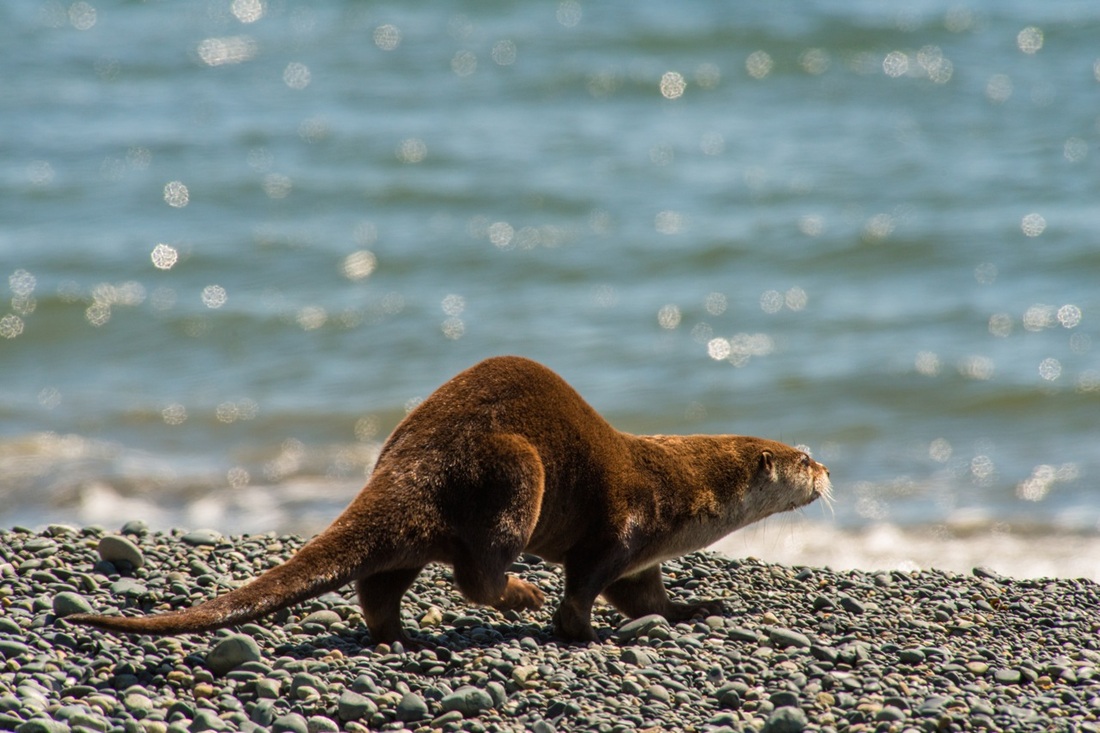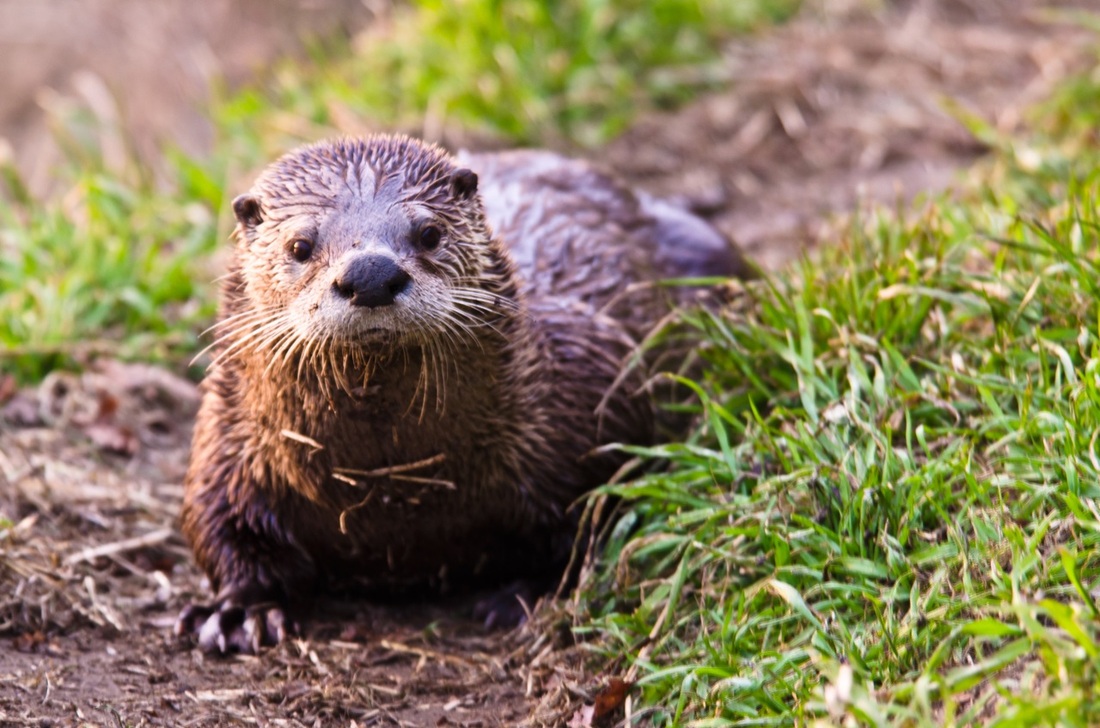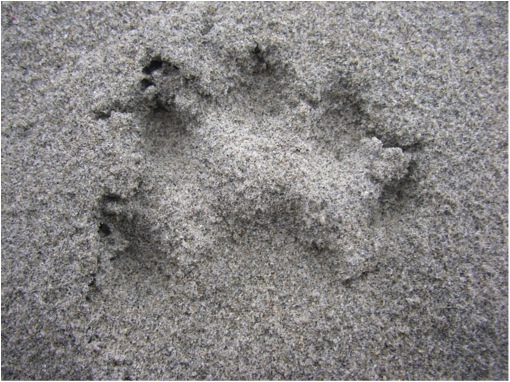River otter, North American otter • Lontra canadensis pacfica
|
Top photos by Mike Munroe. Bottom left: a river otter print photographed by Peter Gibbs. Bottom right: this photo of river otters was captured using a motion-activated camera as part of a student research project.
|
Identification
The river otter has a long, streamlined body to 1.3 m long and a long tapered tail to 40-50 cm long. It has a broad, flat head and short, very dense fur that is dark brown on the top and lighter brown underneath.
Habitat & Range
This semi-aquatic species can be found in both freshwater and marine habitats. It is most abundant on the coast, where it can be found in bays and inland marine waterways. It also inhabits lakes, rivers and marshes. It spends much time foraging in water, but constructs dens on land out of vacated burrows, hollow logs, stumps, and roots. This species is found across North America.
Similar Species
The river otter is sometimes confused for other member of the Mustelidae, or Weasel, family. It can be differentiated from the sea otter (Enhydra lutris) by its longer neck, and its longer, tapered and somewhat rounded tail; the sea otter's tail is short, flattened, and broad. The sea otter almost never goes ashore, whereas the river otter spends much time on land. The river otter can be differentiated from the American mink (Neovison vison), which also inhabits the near shore area, by its much larger size (the American mink only reaches 70 cm long) and its broader, more flattened head.
Human Uses
This species is hunted by humans for its fur.
Intriguing Info
River otters can be solitary or very social (as seen in the video below). They are hunted by killer whales at sea, and cougars, wolves and coyotes on land.
The river otter has a long, streamlined body to 1.3 m long and a long tapered tail to 40-50 cm long. It has a broad, flat head and short, very dense fur that is dark brown on the top and lighter brown underneath.
Habitat & Range
This semi-aquatic species can be found in both freshwater and marine habitats. It is most abundant on the coast, where it can be found in bays and inland marine waterways. It also inhabits lakes, rivers and marshes. It spends much time foraging in water, but constructs dens on land out of vacated burrows, hollow logs, stumps, and roots. This species is found across North America.
Similar Species
The river otter is sometimes confused for other member of the Mustelidae, or Weasel, family. It can be differentiated from the sea otter (Enhydra lutris) by its longer neck, and its longer, tapered and somewhat rounded tail; the sea otter's tail is short, flattened, and broad. The sea otter almost never goes ashore, whereas the river otter spends much time on land. The river otter can be differentiated from the American mink (Neovison vison), which also inhabits the near shore area, by its much larger size (the American mink only reaches 70 cm long) and its broader, more flattened head.
Human Uses
This species is hunted by humans for its fur.
Intriguing Info
River otters can be solitary or very social (as seen in the video below). They are hunted by killer whales at sea, and cougars, wolves and coyotes on land.
References
Lontra canadensis. In Klinkenberg, Brian. (Ed.). E-Fauna BC: Electronic Atlas of the Fauna of British Columbia . Lab for Advanced Spatial Analysis, Department of Geography, University of British Columbia, Vancouver. Accessed: 6/25/2014.
Dewey, T. and Ellis, E. Lontra canadensis. Animal Diversity Web. Accessed 6/25/2014.
Schlimme, K. Neovison vison. Animal Diversity Web. Accessed 6/25/2014.
Harbo, R. (2011). Whelks to Whales: Coastal Marine Life of the Pacific Northwest, Madeira Park, BC: Harbour Publishing. P. 253.
Authors and editors of page
Peter Gibbs, Kelly Fretwell, and Brian Starzomski (2014).
Lontra canadensis. In Klinkenberg, Brian. (Ed.). E-Fauna BC: Electronic Atlas of the Fauna of British Columbia . Lab for Advanced Spatial Analysis, Department of Geography, University of British Columbia, Vancouver. Accessed: 6/25/2014.
Dewey, T. and Ellis, E. Lontra canadensis. Animal Diversity Web. Accessed 6/25/2014.
Schlimme, K. Neovison vison. Animal Diversity Web. Accessed 6/25/2014.
Harbo, R. (2011). Whelks to Whales: Coastal Marine Life of the Pacific Northwest, Madeira Park, BC: Harbour Publishing. P. 253.
Authors and editors of page
Peter Gibbs, Kelly Fretwell, and Brian Starzomski (2014).







